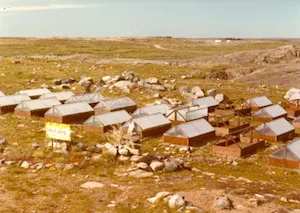
Experimental horticultural projects in the Canadian low and high arctic in the early 1980s: What did we learn?
This week the usual HSP feature turns the clock back to look at how our UTM Biology Emeriti and graduate alumni were looking forward and continue to have an impact on science of today. Emeritus Professors Joseph Svoboda and Ray Cummins, along with former graduate students B. Bergsma, J. McCurdy, and M.J. Romer, just published “Experimental horticultural projects in the Canadian low and high arctic in the early 1980s: What did we learn?” in the Proceedings of the 8th Circumpolar Agricultural Conference on Sustainable Agriculture and Food Security in the Circumpolar North? Whether it is on TV, in the pages of your favourite newspaper, or in the covers of an ecological journal, it is hard not to find gloom and doom about climate change. In the 70s and 80s few people were even whispering the words "climate change”. Amazingly, Svoboda, Cummins and their students were doing more than whisper, they were conducting ground-breaking research on how to harness and enhance climate warming to feed far north communities. Using sun-heated greenhouses these researchers tried to develop methods to supply fresh produce in some of Canada’s most northern communities, including Rankin Inlet (~62 deg N), Pond Inlet (~72.5 deg N) and Alexandria Fiord (~78 deg N). Some of their treatments were so successful that tundra plants increased biomass production by 400%, and their efforts to produce fresh produce resulted in surpluses that were distributed to the local community. It was this success and their foresight that led to them being invited to a recent conference that precipitated this present article. Their experiments from the 70s and 80s are continuing to change the way we think, some 30 plus years later.
Congratulations Emeritus Profs. Svoboda, Cummins and former students!
